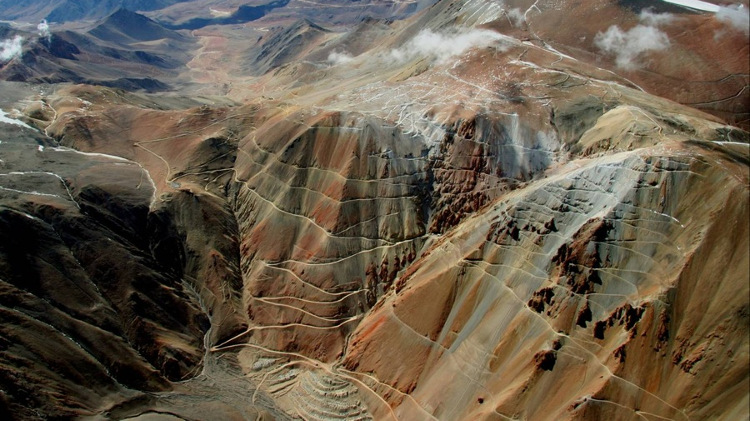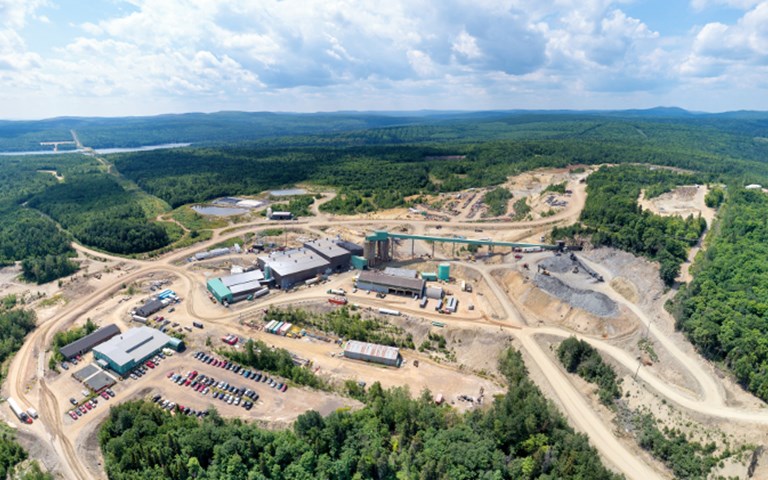Trevali Mining, which owns the Caribou zinc mine in New Brunswick, reported a net income of $23.5 million in the first half of 2018, in comparison to $126,000 in the same time period last year, despite a drop in zinc prices in 2018. Courtesy of Trevali Mining
Despite projections of a strong year for metals across the board, which were expected to be buoyed by global growth, multiple commodities have been hit by depressed prices this year as ongoing trade disputes soured market sentiment.
Even though the U.S. and China both saw strong economic growth, it is not reflected in the pricing of base metals, said TD Securities commodities strategist Ryan McKay. That can be traced back to June, when U.S. President Donald Trump imposed 25 per cent tariffs on foreign steel and 10 per cent on foreign aluminum.
“As these trade wars started to come into play, we’ve really seen these metal prices disconnect from the fundamentals,” he said.
Scotiabank commodity economist Rory Johnston had a similar view, writing in his Aug. 31 commodity price index that “despite mixed but still encouraging economic fundamentals, commodities are currently being driven by bets that growth will sour” due to trade disputes.
Zinc, favoured at the beginning of the year to continue its upward trend due to tight supply, tumbled from its one-year high in February of $1.60/pound to a two-year low of just over $1/pound in August. The last two years of high prices “are now seen as having done their job of incentivizing new mine supply investment,” Johnston wrote. He added that demand has slowed because of reduced growth in China’s construction sector and U.S. tariffs on steel, but felt that the current rout was “overdone” and prices are likely to rebound.
“The momentum was pushing [zinc] higher. It just had that much further to fall when overarching growth concerns [prompted by trade wars] kind of manifested,” Johnston said in an interview.
Despite zinc’s drop, Canadian producers Teck Resources and Trevali Mining did well in the first half of the year. Trevali, which last year acquired two zinc operations from Glencore, reported net income of $23.5 million, in comparison to $126,000 last year, and mined more than 807,000 tonnes of zinc, up from more than 371,000 in Q2 2017. Teck attributed its quarterly gross profits of $1.2 billion, up from $1.1 billion last year, to “favourable prices” of zinc and steelmaking coal.
Related: The mining team at Trevali’s Caribou mine is ramping up production at the New Brunswick operation with the expectation that zinc prices are set to bounce back
Copper’s fall was well reported, dropping more than 20 per cent from its sustained peak last year into a bear market in August. The metal was expected to do well this year based on its still-strong long-term prospects and the number of labour contracts up for renewal at copper operations in Peru and Chile.
However, trade tensions have not held down all commodities. Aluminum prices remained high even as the metal has been the target of U.S. tariffs. Rio Tinto, which has aluminum operations in Canada, reported that an 18 per cent increase in aluminum prices over the past year and “higher market premiums for aluminum” were among the factors that contributed to a US$604-million increase in its adjusted earnings (EBITDA) in the first half of 2018, compared to the same time last year.
Rio Tinto CEO Jean-Sébastien Jacques said in the company’s 2018 half-year results Q&A he is confident that “the supply chain is so integrated between the US and Canada, that common sense will prevail.” Jacques added that to date the company has not been impacted by trade disputes, but that it is watching the potential situation “very carefully.”
Nickel and cobalt have also defied the market-wide slump thanks to continued growth in electric vehicle interest. “They’re very, very high today in part because of this forward expectation of such strong demand from the battery sector,” Johnston said.
Electric vehicle (EV) sales worldwide grew 69 per cent in the second quarter, compared to the same period in 2017, though the rate was not quite as high as expected.
The number of EVs on the road is largely dependent on the policy environment and subsidies. China had a strong subsidy policy to support demand, then started to reduce subsidies on shorter range (the distance a vehicle can travel on a battery charge) EVs at the end of 2017, explained Alex Laugharne, a principal consultant with CRU Group based in New York.
“They’re not producing quite as much, so EV numbers have been slightly lower than might have been expected for this year so far,” he said. “But regardless of that, certainly the uptake of EVs is already having a big impact on various metals markets.”
Cobalt prices have stayed high thanks to what CRU director Paul Robinson said at PDAC were “critically low” stocks of the metal. Increased adoption of EVs could create a “persistent market deficit.” CRU projects that 63 per cent of the demand growth for cobalt between 2016 and 2021 will be from the automotive sector.
“There’s a lack of availability,” said Laugharne. “If you can’t get a hold of the material, that makes it very difficult to make the batteries you want to make.”
This uptick should spell continued good news for Vale. The company reported its cobalt sales revenue at US$94-million in the second quarter, compared to US$60-million last year, yet sold nearly the same volume as last year, at 1.2 million tonnes.
Nickel’s fortunes have also rebounded from last year, reaching an average of US$14,476 per tonne in Q2, its strongest since the first quarter of 2015, according to Vale’s report. That is thanks, in part, to manufacturers pushing to transition to nickel-heavy batteries, a move that will lead to a battery with higher energy density that would be less dependent on battery-quality cobalt.
Vale also reported a 21 per cent increase in its adjusted EBITDA from the first quarter, which it attributed to “higher nickel and copper realized prices, higher by-product volumes, and higher nickel and copper volumes.”
In June, the company also greenlit development of its Voisey’s Bay underground nickel-copper-cobalt mine, which is expected to produce around 45,000 tonnes of nickel, 20,000 tonnes of copper and 2,600 tonnes of cobalt per year. The cobalt streaming agreement it signed with Wheaton Precious Metals and Cobalt 27 Capital was “one of many factors that make this an attractive project,” said Cory McPhee, Vale’s vice-president of corporate affairs and communications.
Stepping back to the outlook for base metals on the whole, their short-term prospects remain up in the air. “All of this is very much a kind of contest between rationality – in that trade wars hurt everyone – and personality, in terms of having very personality-driven trade negotiations style in the White House,” Johnston said. “And at this stage, it’s really a question of how long that aggressive trade stance is going to be maintained.”



